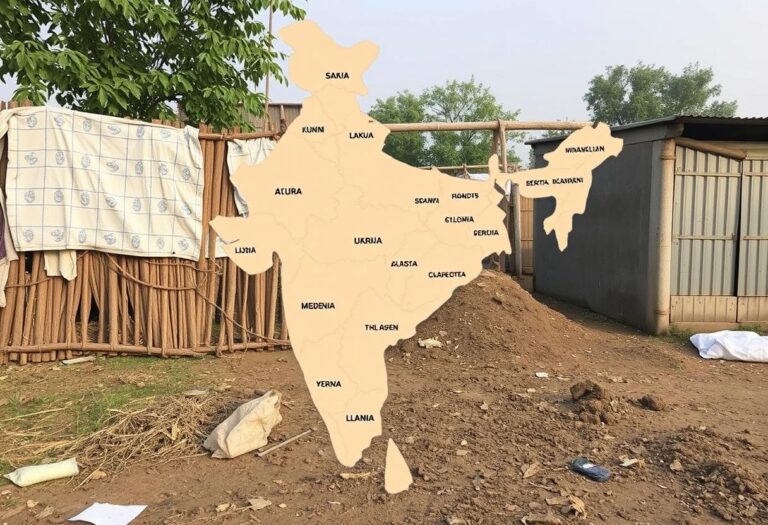India, a country of vast diversity, is home to some of the world’s most affluent individuals and regions. However, it is also marked by stark economic disparities, particularly between its states. While some states have surged ahead in terms of economic development, others continue to grapple with high levels of poverty. This article delves into the ten poorest states in India, exploring the socio-economic factors contributing to their struggles.
1. Bihar
Bihar has long been synonymous with poverty in India. With a predominantly agrarian economy, the state suffers from low industrialization, high unemployment, and poor infrastructure. The state’s literacy rate and healthcare facilities are also among the lowest in the country.
2. Jharkhand
Despite its rich mineral resources, Jharkhand remains one of the poorest states. The benefits of its natural wealth have not trickled down to the general population. A lack of basic amenities, coupled with high levels of corruption and mismanagement, has kept the state in poverty.
3. Uttar Pradesh
As India’s most populous state, Uttar Pradesh faces immense challenges in providing adequate services and employment opportunities to its people. High population density, low industrial growth, and poor governance contribute to its high poverty levels.
4. Madhya Pradesh
Madhya Pradesh is another state where poverty is pervasive. The state’s economy is largely dependent on agriculture, which is vulnerable to fluctuations due to erratic monsoon patterns. Additionally, the state’s tribal population is particularly disadvantaged, with limited access to education and healthcare.
5. Chhattisgarh
Like Jharkhand, Chhattisgarh is rich in minerals but poor in development. The state struggles with low human development indicators, including literacy and life expectancy. Additionally, insurgency in certain regions has hampered progress and investments.
6. Odisha
Odisha, with its significant tribal population, is one of the poorest states in India. Although it has seen some economic growth, particularly in the industrial sector, this has not been inclusive. The rural areas of Odisha continue to suffer from high levels of poverty and underdevelopment.
7. Assam
In the northeastern region of India, Assam stands out as one of the poorest states. The state’s economy is primarily based on agriculture and tea production, but frequent floods and lack of infrastructure hinder growth. The insurgency and ethnic conflicts have further exacerbated the state’s economic woes.
8. Rajasthan
Rajasthan, known for its historical and cultural heritage, also has a significant portion of its population living in poverty. The state’s arid climate makes agriculture challenging, and industrial development has been uneven, leading to persistent economic disparities.
9. Manipur
Manipur, another northeastern state, faces considerable economic challenges. The state’s remote location, coupled with political instability and insurgency, has stifled its economic growth. Poverty is widespread, particularly in rural areas where infrastructure and services are severely lacking.
10. Meghalaya
Rounding out the list is Meghalaya, where poverty is widespread despite the state’s natural beauty and resources. The state’s economy is primarily agrarian, with limited industrial activity. Geographic isolation and lack of connectivity have further impeded its development.
Conclusion
The economic disparities between India’s states are a reflection of the country’s complex socio-economic landscape. Addressing poverty in these states requires targeted interventions, including improved infrastructure, education, healthcare, and governance. Only with focused efforts can India hope to bridge the gap and uplift its most vulnerable populations.
